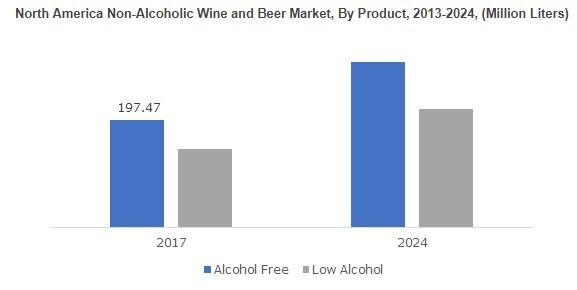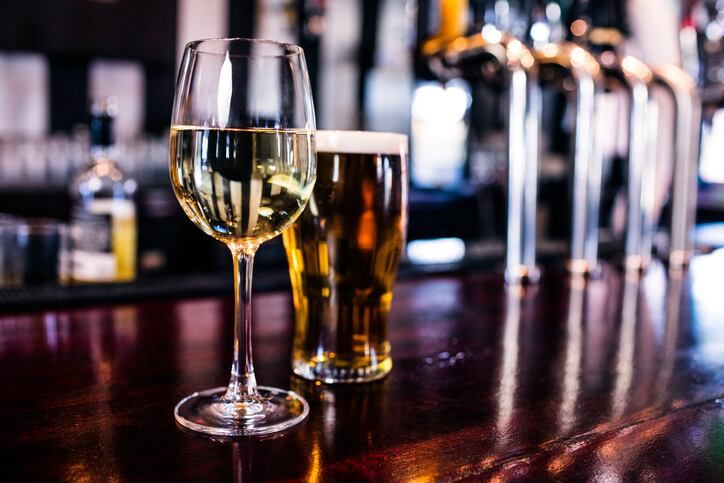The rising prevalence of coronary diseases and heart-related health risks has fueled the non-alcoholic wine and beer market, which has grown exponentially in the past few years along with improving living standards of consumers.
Due to concerns about consuming excess alcohol, worldwide efforts to explore the benefits and production techniques for making alcohol-free or low-alcohol beverages have escalated.
Calorie cutting
The non-alcoholic wine and beer industry has profited from an incredible shift in preference by millennials and the disease-prone geriatric population, who wish to lower the probability of cardiovascular diseases.
Compared to alcoholic beverages, studies have shown that non-alcoholic beers exhibit boosted antioxidants, increased Vitamin B6 and slower blood coagulation, all of which help to prevent heart conditions. Additionally, benefits such as effective stress control and suitable for consumption by pregnant women have endorsed non-alcoholic wines and beers.
A major cause of obesity and heart issues is unrestrained consumption of calories from beverages containing high sugar content. Boasting annual earnings of over $16bn globally in 2017, the non-alcoholic wine and beer market consists of products with significantly less proportion of calories than the alcoholic options.

Consequently, a number of bodies have been promoting lower or non-alcoholic beers and wines.
For example, the Great British Beer Festival, which has been running since 1977, recently confirmed it will offer alcohol-free beer for the very first time; produced by Netherland-based craft brewer Braxzz. The company sells both low and no-alcohol beers and the festival organizers expressed an interest due to the increasing importance of such products in the market, which has caused the sale of alcoholic drinks to decline.
Drinking culture: Europe
Taking statistics from 2018, the UK non-alcoholic beverages market has grown by 15% over the last two years with health-conscious consumers looking for lower-alcohol content in drinks.
In July Aldi, a major supermarket chain, introduced two non-alcoholic wines. These wines are said to have less than half of the calories found in alcoholic wines and are also cheaper.
With the presence of several prominent producers, and a major consumer of both alcoholic and non-alcoholic drinks, Europe generates huge revenues for the non-alcoholic wine and beer market and registered a demand in excess of 1 billion liters in 2017.
The UK, Germany, Ireland, France and Italy are some of the biggest consumers of alcoholic drinks and the growing intensity of health problems in these countries will encourage the development of the European non-alcoholic wine and beer industry.
Heineken 0.0
A number of popular brands such has Carlsberg, Heineken, Bernard Brewery, Erdinger Weibbrau, among others have stepped into the non-alcoholic wine and beer market.
Seeking to capitalize on the swift expansion of the non-alcoholic wine and beer market, the world’s second largest beer producer, Heineken, has launched a non-alcoholic lager. In one of its markets, Ireland, beer is the preferred alcoholic beverage with a 46% market share in 2016 and a contribution close to EUR 1.7bn ($1.9bn) to the country’s economy. The company claims that the alcohol-free lager, Heineken 0.0, has half the calories of regular beer and taster better than most other products in the category.
As the Heineken 0.0 experiences strong sales in Spain, Netherlands, Russia and many other countries, the non-alcoholic wine and beer market will undergo a significant transformation with other brands also attempting to sell low-alcohol beverages through retail stores and ecommerce platforms.
Over the past few years, research has been conducted to compare the effects of alcoholic and non-alcoholic drinks on the human body, primarily inspired by the explosion of cardiac disorders globally. A study performed on 67 men, who had diabetes or displayed three or more risk factors of heart diseases, observed the effect of red wines with and without alcohol. Interestingly, when the men drank alcohol-free red wine their blood pressure lowered down to levels which reduce the risk of heart diseases by 14% and chances of stroke by 20%.
All-in-all, the need for healthier drinks with enhanced antioxidants and electrolytes that can be incorporated in daily life has stimulated the non-alcoholic wine and beer industry, accentuated by disorders like liver cirrhosis, CVD and certain cancers that originate from alcohol abuse.
Offering an affordable solution for people who want to socialize without consuming alcohol, or those who are restricted from drinking alcohol-infused beverages, the non-alcoholic wine and beer market is anticipated to record an impressive 7.6% CAGR from 2018 to 2024.

